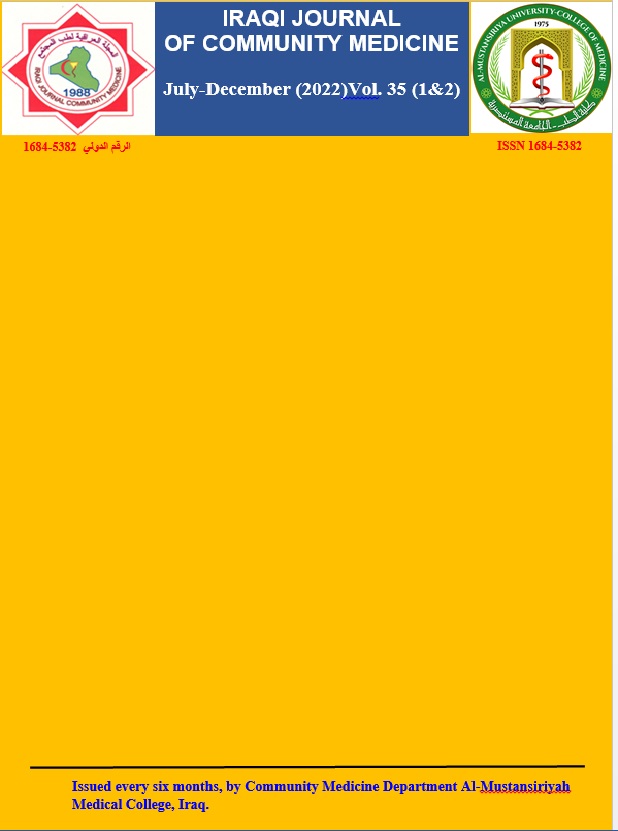Abstract
Background: Anabolic androgenic steroid abuse has become a public health problem in many countries. Over the last few years the use of anabolic steroids has become increasingly common amongst amateur athletes and for aesthetic purposes. As a result, the adverse events related to their use are being seen more frequently. Recent studies suggest that 3 to 12% of male adolescents and about 1 to 2% female adolescents use at some time during their lives.
Objective: to uncover the extent of use of anabolic supplements among gymnasium attendants and their attitude towards it.
Methods: This cross-sectional study was conducted among male athletes attending gyms during the period from February through September 2011 in many gyms distributed in both sides of Baghdad city. The sampling method was a convenient non-random one, carried out in a sample of athletes trained in fifteen of Baghdad gyms during the study period. An anonymous self-administered questionnaire form had been developed which includes demographic and other factors that show the situation and attitude of the athletes towards anabolic supplements.
Results: The mean age of respondents was (25.4±6.1) ranging from 16-52 year. The sample was classified according to the usage of anabolic supplements into: users (73.8%) and non-users (26.2%), the route of use is either orally (43.4%), intramuscularly (21.7%), or both (34.9%). The side effects that are experienced by the study sample accounted for 32.3% of the users (134 respondents). These side effects are as follows: skin diseases (20.1%), renal (6.7%), behavioral side effects (6.7%), cardiovascular problems (5.2%), uro-genital disorders (6.7%), liver problems (0.7%).
Conclusion: It can be concluded from this study that most of gyms’ members belong to 15-24, and 25-34 years and three quarters of them use anabolic supplements. They believe that these supplements are highly risky but don’t have the ability to stop them. It is recommended to start community based health education programs to increase the knowledge about the use of these drugs by cooperated efforts between Ministry of health and Ministry of youth and sport. Also strengthen the legislations to regulate the importation, quality control, and supervision of these drugs generally and of anabolic steroid and hormones specifically.
Objective: to uncover the extent of use of anabolic supplements among gymnasium attendants and their attitude towards it.
Methods: This cross-sectional study was conducted among male athletes attending gyms during the period from February through September 2011 in many gyms distributed in both sides of Baghdad city. The sampling method was a convenient non-random one, carried out in a sample of athletes trained in fifteen of Baghdad gyms during the study period. An anonymous self-administered questionnaire form had been developed which includes demographic and other factors that show the situation and attitude of the athletes towards anabolic supplements.
Results: The mean age of respondents was (25.4±6.1) ranging from 16-52 year. The sample was classified according to the usage of anabolic supplements into: users (73.8%) and non-users (26.2%), the route of use is either orally (43.4%), intramuscularly (21.7%), or both (34.9%). The side effects that are experienced by the study sample accounted for 32.3% of the users (134 respondents). These side effects are as follows: skin diseases (20.1%), renal (6.7%), behavioral side effects (6.7%), cardiovascular problems (5.2%), uro-genital disorders (6.7%), liver problems (0.7%).
Conclusion: It can be concluded from this study that most of gyms’ members belong to 15-24, and 25-34 years and three quarters of them use anabolic supplements. They believe that these supplements are highly risky but don’t have the ability to stop them. It is recommended to start community based health education programs to increase the knowledge about the use of these drugs by cooperated efforts between Ministry of health and Ministry of youth and sport. Also strengthen the legislations to regulate the importation, quality control, and supervision of these drugs generally and of anabolic steroid and hormones specifically.
